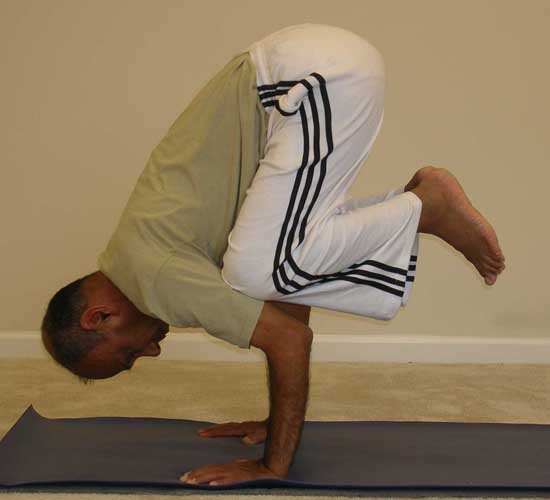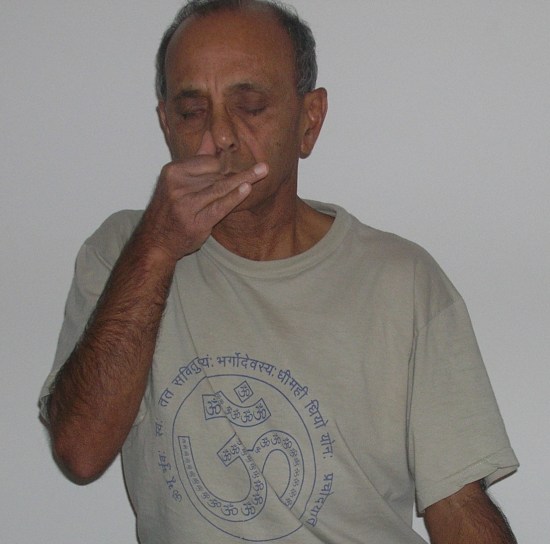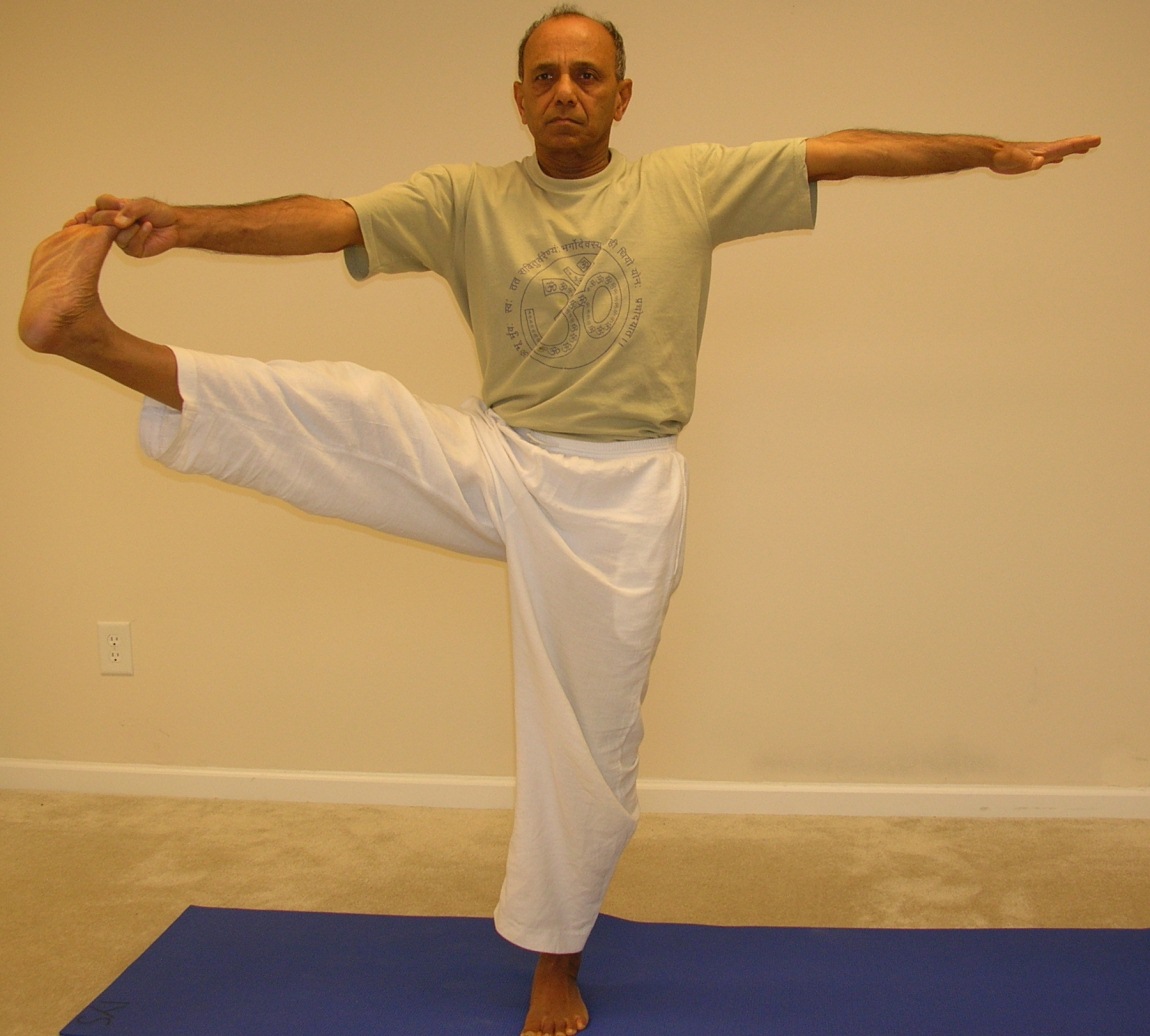|
|
I am pleased to announce the next 21-day Yoga Challenge program. The past programs have been very well received by all the participants. For most of them, it has been truly a life-transforming experience. I invite you to join me on this exciting and deeply rewarding 21-day yoga journey. Here are the particulars:
- When: Sunday, August 5- Sunday, August 26, 2012 (no class on Sunday, August 19)
- Time: 6:00 AM – 7:30 AM
Continue reading »

The word "baka" means a crane in Sanskrit – hence the name "Crane Pose". In some texts, you may find the word ‘bakasana’ ( बकासन) wrongly translated as "Crow Pose". The word for crow in Sanskrit is "kaka" so the Sanskrit word for "crow pose" would be "Kakasana".
Continue reading »

In the past, I have written about the concept of kumbhaka (breath retention). I also described a few of the pranayama techniques that involve the practice of kumbhaka. In today’s post I will discuss kumbhaka as part of one of most commonly practiced pranayama techniques – alternate nostril breathing (Naadi Shuddhi or Anuloma Viloma). I have discussed the basic technique for Naadi Shuddhi in an earlier post.
In a previous post, I also introduced the concept of bandhas (pranic locks). These bandhas are usually applied while the breath is being retained in kumbhaka. It is, therefore, natural and common to practice both kumbhaka and bandha together.
Continue reading »
I am pleased to announce the next pranayama/meditation intensive:
Come and join me for this life-transforming experience where you will learn two of the most important aspects of a complete, integrated yoga practice – pranayama (breathing techniques) and meditation. In this program I will introduce you to many of the breathing techniques that are mentioned in our ancient yogic texts. I will also introduce the concepts and techniques of meditation. No prior pranayama or meditation experience is required.
- When: Wednesday, July 11- Sunday, July 22, 2012
- Time: 6:00 – 7:30 AM
- Location: Kalasrishti, 3000 Bearcat Way, Suite 112, Morrisville, NC 27560
- Daily Routine: Light stretching (10-15 minutes), Pranayama (30 min), Relaxation (10 min), Yoga philosophy (15 min), Meditation (20 min).
- Commitment: A firm commitment to follow this schedule and attend every day
- Fee: $75
Continue reading »
As always, we had a delicious breakfast experience last Sunday as part of the currently ongoing 21-day yoga challenge program. Here are the recipes for two of the dishes that we enjoyed:
Healthy Fruit Smoothie
(by Gillian Horsham)
Technique: put all ingredients into the blender and blend until smooth.
Large Group
Continue reading »
Ishvara Pranidhana – ईश्वर प्रणिधान – is the last of the five Niyamas given by Patanjali in the Yoga Sutras. The word "pranidhana" means total surrender or letting go of the individual ego in favor of a higher Self. The word Ishwara has been defined by Patanjali in sutra 1.24 as " Isvara is the supreme Purusha, unaffected by any afflictions, actions, fruits of actions or by any inner impressions of desires." When loosely translated, Ishwara means God. However, we need to constantly keep Patanjali’s definition in mind while we are discussing the sutras related to Ishwara Pranidhana.
Ishvara Pranidhana in the Yoga Sutras
Continue reading »
Social media and social networking have become a powerful means for connecting and interacting with each other. I have so far paid scant attention to this powerful medium. However, in recent months many of my students have suggested that I become more involved with social networks like Facebook and Linkedin. This will help me establish stronger connection with my yoga students as well as other yoga friends. It will also provide a platform for discussion among the members who join my networks.
Continue reading »

Utthita Hasta Padangushthasana ( उत्थितहस्तपादाङ्गुश्ठासन) (Extended hand to big toe pose) is an intermediate level one-leg balancing pose. Like most other standing balancing poses, it develops strength in the legs, focus, concentration, balance and stability.
Step-by-step
- Begin by coming to a standing posture on the mat.
Continue reading »
Continuing our discussion of the concepts from the Yoga Sutras of Patanjali, in today’s post I would like to focus on Swadhyaya (study of the self) which is the fourth of the five Niyamas.
The word Swadhyaya (स्वाध्याय) is a composite of two words – the prefix ‘swa’ and ‘adhyaya’. The word ‘swa’ is often used as a reflexive pronoun and, depending upon the context, could mean ‘one’s own’, ‘belonging to oneself’, ‘inherent’, ‘natural’, ‘self’ etc. The word ‘adhyaya’ means to study or to learn. So, Swadhyaya is usually translated as ‘study of the self’ or ‘study of the scriptures’ or a combination of the two.
Study of scriptures
As we know, the purpose of yoga is to understand the intricate functioning of the mind and learn how to calm the mind to the point that we get a revelation of our true nature. This is also called self-realization. How do we understand the functioning of the mind? This is where the study of scriptures comes in. Many of our ancient scriptures discuss not only the mind but all aspects of this material world which directly impact the mind. Continue reading »
I am pleased to announce the next 21-day Yoga Challenge program. The past programs have been very well received by all the participants. For most of them, it has been truly a life-transforming experience. I invite you to join me on this exciting and deeply rewarding 21-day yoga journey. Here are the particulars:
- When: Monday, June 11- Sunday, July 1, 2012.
- Time: 6:00 AM – 7:30 AM
- Where: Kalasrishti – 3000 Bearcat Way, Suite 112, Morrisville, NC 27513 (off Aviation Parkway)
- Commitment: Continue reading »
|
Video DVD
Yoga with Subhash (asana and pranayama)
- Basic asana sequence (~50 min) ($18)
- Pranayama/Meditation (~35 min) ($12)
- Set of above two ($25)
Video recording of special programs offered in the past
(Links to YouTube videos will be provided)
- 21-day yoga immersion - $40
- 7-day hip opening intensive - $20
- 14-day meditation intensive - $30
- 14-day pranayama intensive - $30
- 7-day hamstring/quad intensive - $20
- 14-day Level 2 yoga intensive - $35
Payment options:
- cash, check, Zelle (use subhashmittal@gmail.com) or Venmo (use 9199269717)
- PayPal (go to bottom of page) (add $5 to the fee listed above)
Please contact me if you would like to buy.
|



Recent Comments